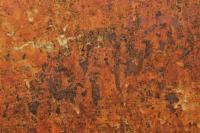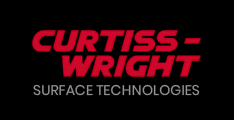 Add My Company
Add My Company
Sign In

Firstly, is oxidation and rust the same thing?
Oxidation is the general chemical reaction of losing one or more electrons in an atom, molecule or ion, however, rust is an oxidation reaction only when iron reacts with water and oxygen. There are different colours of rusts and it’s important to know the difference so you can treat them correctly.
Types of rust:
Red Rust
Hydrated oxide Fe2O3•H2O (high oxygen/water exposure)
The most common type of corrosion is uniform corrosion. This is where an even layer of oxidation appears across the surface of the material. When metal is exposed to high volumes of water and oxygen, the iron oxidises with a contaminate, this creates “red” rust.
Yellow Rust
Iron oxide-hydroxide FeO(OH)H2O (high moisture)
Yellow rust is present in metals that are found in large amounts of standing water. This type of rust is usually found in a solvated state, commonly found near sinks and bathtubs.
Brown Rust
Oxide Fe2O3 (high oxygen/low moisture)
Brown rust can react even with lack of moisture, compared to the others highlighted above. Unlike red rust, brown rust can form as non-uniform corrosion, appearing on specific areas of the material rather than the overall surface. The manufacturing process can usually be the result of brown rust when contaminates are found on metal surfaces.
Black Rust
Iron (II)oxide – Fe3O4 (limited oxygen)
Black rust can form when oxygen cannot reach the material, perhaps it is trapped and covered by another material resulting in a stain-like reaction. Unlike the other types of rust, black rust does not produce as quickly and is not as common which makes it easier to combat.
What happens when a material is not treated?
Premature failure can result in many problems; corrosion, stress corrosion cracking, galling amongst others.
CWST provides a wide range of surface treatment services which can help to mitigate material oxidation and help to increase product life-span and reliability.
1) Thermal Plasma and HVOF Spray Coating
HVOF spray coating and Thermal Plasma coatings are used commonly in the aerospace, automotive, power generation and oil and gas industries. This is due to the coatings ability to resist and present oxidation and erosion. There are a wide range of benefits to using Thermal Plasma and HVOF Spray coatings which you can find out more about by visiting our material surface treatment page.
2) Shot Peening
Component failure is often related to residual tensile stress induced during the manufacturing stage. Our controlled shot peening services are a highly cost-effective method to mitigate corrosion fatigue and wear. Find out more about controlled shot peening today by visiting our shot peening services page.
3) Everlube ® products
CWST provides a range of Everlube ® products which help to lubricated and protect low frictional resistance between two mating parts. Everlube ® products are a form of dry film lubricant coating. Depending on the material application, there are a range of different products that can be utilised to resist oxidation and wear. Find out more about Everlube ® coatings by visiting our material coatings page.
For more information on Types of rusting and how metal surface treatment can help prevent oxidation talk to Curtiss Wright Surface Technologies
Enquire Now
More News
List your company on FindTheNeedle.

